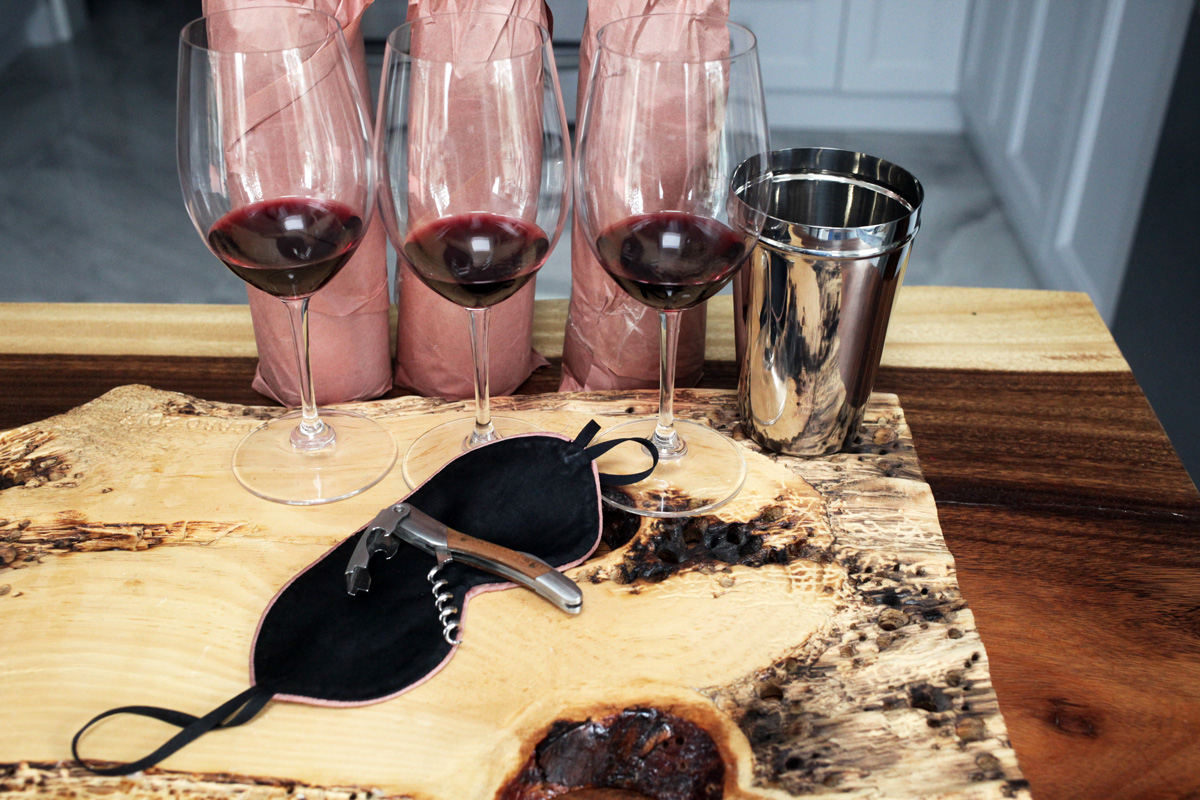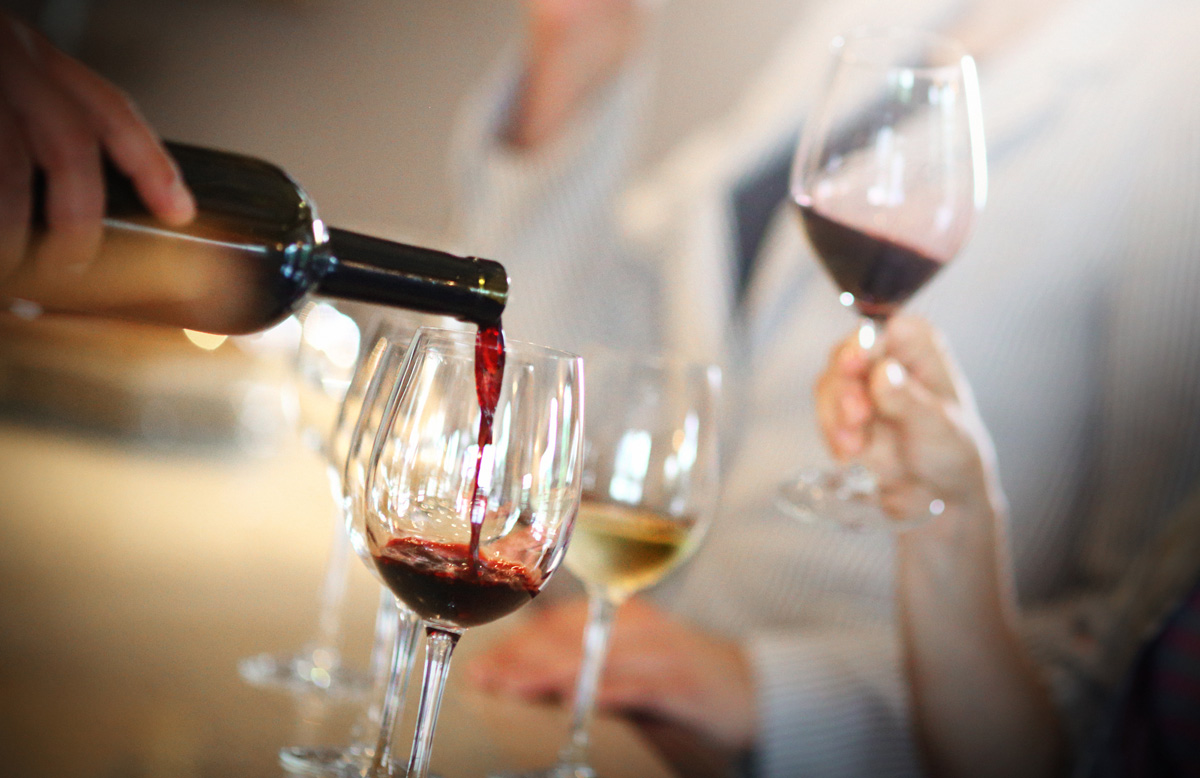
Ontario Wine Culture

In blind tastings bottles are often wrapped to prevent tasters from prematurely getting revealing clues.
If learning is about consuming and applying lessons, then the ultimate expression of wine learning is blind tasting. In wine-speak tasting blind means you don’t know the identity of the wine(s) you’re about to taste.
Without preconceptions and biases you’re free to judge the wine solely on the merits of what’s in the glass. That’s how it’s supposed to work.
The problem is that wine is all about context. It’s about your mood, what kind of food—if any—you’re enjoying it with, the company you’re sharing it with and how it can transport you back to the medieval town of your favourite holiday. Strip away the context and you’re left with gluggable adult grape juice.
The untold truth is that blind tasting only really works because we have experts and classic wines to act as benchmarks. Like good improv the magic of blind tasting requires professionals with the underlying knowledge, skills and experience to take the sketchiest of details behind a wine and craft it into a compelling story.
Ontario’s wine certification body the Vintners Quality Alliance requires its wines pass a blind tasting. But when local winemakers began experimenting with more raw and rustic winemaking techniques that are traditional elsewhere, these wines had trouble passing. They had inherent characteristics like cloudiness, which are viewed as flaws in conventional wine education. The solution was to reset the benchmarks and provide context with more education to the tasters and by telling the tasters the style when they’re blind tasting these wines.
Even with its limitations blind tasting has an integral place as the gut microbiome of the wine world. It underlines how everything else functions. From judging, to education, to quality assurance we’re aware of its importance. But it’s inner workings are complicated enough that most of us, myself included, are happy to take its benchmarks and leave translating its deeper secrets to the select skilled experts.
After all every glass tells a story and the story is so much better when you haven’t lost the plot.

istockphoto.com photo
To learn something useful from a blind tasting it needs a theme that’s specific, but not esoteric. Honing in on a grape variety like Gamay Noir, a region like Loire or a style like traditional method sparkling gives you the thread necessary to compare, contrast and hopefully weave it all into a conclusion.
Blind tasting is much better done in a small group of 4-8 people. After tasting and writing notes on your own, take a few minutes before revealing the wine and have a brainstorm-style discussion where everyone shares what they think the suspected identity of the wine is and why. Leave some wine in your glass or ask for more because someone else might describe a taste or smell in a way that reveals something and you want to be able to follow along.
When the wine is revealed write down its details (region, grapes, winery, vintage, wine name, etc.), give it one last taste and clean-up your notes highlighting unique tastes smells and textures that stick out about the wine. Once all the wines from the tasting are revealed take a last look at all your notes keeping an eye out for patterns and unique characteristics. These are type of takeaways that will help you unravel a wine’s identity in future blind tastings.

Michael Di Caro is a writer and the editor of Vitis Ontario. He has been covering the Ontario wine industry for over a decade. You can find him in the cellar or among the vines uncovering the stories behind the bottle.

Michael Di Caro is a writer and the editor of Vitis Ontario. He has been covering the Ontario wine industry for over a decade. You can find him in the cellar or among the vines uncovering the stories behind the bottle.
Copyright © 2025 - All Rights Reserved Vitis Magazine